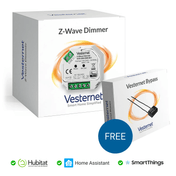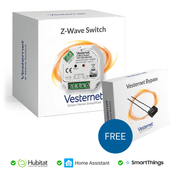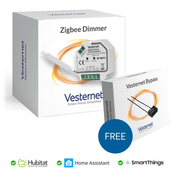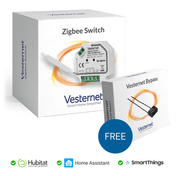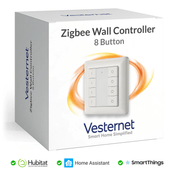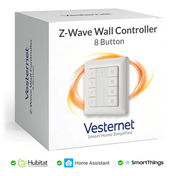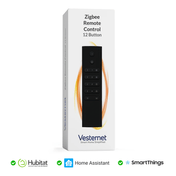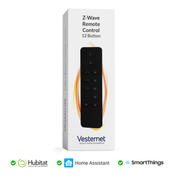Professional home security has evolved beyond basic DIY setups, with property owners increasingly seeking robust nvr ip camera systems that can grow with their needs. The challenge lies in choosing between compact, streamlined solutions and expandable recording systems that accommodate future security expansion. This detailed comparison examines two distinct approaches within the Nice MyEye ecosystem: the 4-camera LITE model with integrated PoE functionality versus the comprehensive 16-camera standard recorder.
Understanding which system suits your requirements involves evaluating current security needs against potential growth, power delivery preferences, and integration complexity. Drawing from extensive experience with smart home security installations and the FIBARO/Nice/Yubii ecosystem, this guide provides the practical insights needed to make an informed decision between these professional recording solutions.

Understanding the Compact 4-Camera LITE NVR Solution
The Nice MyEye Video Recorder LITE represents a streamlined approach to professional security recording, specifically engineered to manage up to 4 MyEye series IP cameras efficiently. This compact unit integrates essential recording functionality with built-in PoE capability, eliminating the need for separate power injection equipment whilst maintaining professional-grade performance standards.
Key LITE Model Features
- Integrated 4-port PoE switch for direct camera power delivery
- Support for hard drives up to 16TB capacity
- HDMI and VGA outputs for local monitoring
- Native FIBARO/Nice/Yubii ecosystem integration
- Automatic camera import functionality
The LITE model's design philosophy centres on simplicity and convenience, making it an ideal entry point for those seeking a best poe nvr security camera system without the complexity of larger installations. Its compact form factor and integrated power delivery create a plug-and-play experience that reduces installation time and complexity significantly.

Exploring the Full-Scale 16-Camera Recording System
The standard Nice MyEye Video Recorder scales professional surveillance capabilities to accommodate comprehensive security networks, supporting up to 16 MyEye series IP cameras simultaneously. This expanded capacity makes it suitable for larger properties, commercial applications, or installations where future camera additions are anticipated.
Standard Model Capabilities
- Management of up to 16 IP cameras concurrently
- Enhanced storage capacity supporting up to 20TB
- Professional-grade recording and playback features
- Comprehensive surveillance hub functionality
- Advanced camera management tools
This expanded recorder serves as a centralised surveillance hub, providing the infrastructure necessary for comprehensive security coverage. Its higher storage ceiling and camera management capabilities position it as the backbone for extensive security installations requiring professional-level monitoring and recording capabilities.
Camera Capacity and Power Delivery: LITE vs Standard Features
The fundamental difference between these systems lies in their camera handling capabilities and power delivery approach. The LITE model's 4-camera limitation with integrated PoE creates a self-contained system, whilst the standard recorder's 16-camera capacity requires external power solutions but offers significantly greater scalability.
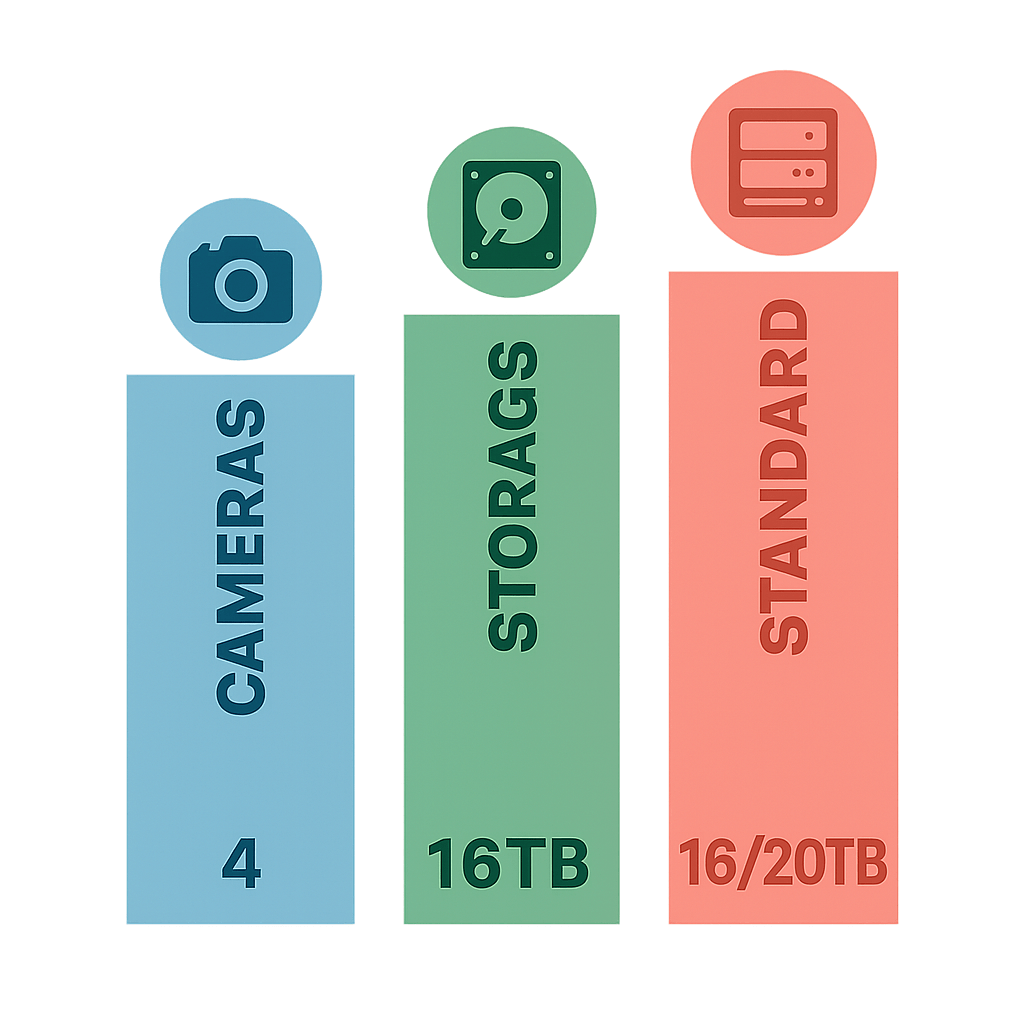
Capacity Comparison Breakdown
- LITE: 4 cameras maximum with built-in PoE ports
- Standard: 16 cameras maximum requiring separate PoE switches
- Storage: 16TB (LITE) versus 20TB (Standard) maximum capacity
- Installation complexity varies significantly between models
The LITE model's integrated PoE functionality eliminates additional hardware requirements, making it particularly suitable for straightforward installations where cable management and power injection complexity must be minimised. Each PoE port delivers power and data connectivity simultaneously, reducing installation points and potential failure modes.
Conversely, the standard recorder's approach separates recording functionality from power delivery, requiring dedicated PoE switches or injectors for camera power. This separation increases initial complexity but provides flexibility in power management and enables the use of existing network infrastructure more effectively.
Storage and Performance Implications
- Recording duration varies based on camera resolution and frame rates
- Storage efficiency depends on motion detection settings
- Network bandwidth requirements scale with camera count
The 4TB storage difference between models may seem modest, but it becomes significant when considering recording duration and retention requirements. Higher camera counts on the standard model distribute this storage across more recording streams, whilst the LITE model's 4-camera limit allows for longer retention periods per camera or higher quality recording settings.
Real-World Recording and Management Performance
Performance evaluation reveals distinct operational characteristics between the two models, particularly in multi-camera feed management and system responsiveness. The LITE model's focused design delivers consistent performance across its 4-camera capacity, whilst the standard recorder's broader scope requires more sophisticated resource management.
System Performance Metrics
- Live feed switching speed and responsiveness
- Simultaneous recording stability across multiple cameras
- Search and playback functionality efficiency
- Network resource utilisation patterns
Integration with home assistant nvr systems and the broader FIBARO/Nice/Yubii ecosystem demonstrates similar capabilities across both models, with automatic camera discovery and import functionality streamlining initial setup. The standard recorder's additional processing overhead becomes apparent when managing maximum camera loads, though this rarely impacts normal operation significantly.
Storage efficiency varies considerably based on implementation, with both models supporting motion-triggered recording and customisable quality settings. The LITE model's concentrated approach often results in more predictable storage consumption patterns, whilst the standard recorder's flexibility allows for varied recording strategies across different camera zones.
Ecosystem Integration Benefits
- Automated camera import reduces setup complexity
- Unified management through single application interface
- Seamless integration with existing smart home automation
Both recorders excel in ecosystem integration, automatically importing previously configured cameras without individual device setup requirements. This integration significantly reduces commissioning time and eliminates potential configuration errors during system expansion or modification.
MyEye LITE NVR: Advantages and Limitations
The LITE model's strengths centre on convenience and simplicity, making it an excellent choice for straightforward security installations. Its integrated PoE functionality eliminates external hardware requirements, whilst its compact design suits installations where space constraints or aesthetic considerations matter.
Primary LITE Model Advantages
- Integrated PoE eliminates need for additional switches
- Compact design suitable for discrete installation
- Lower complexity reduces potential failure points
- Cost-effective solution for smaller properties
However, the 4-camera limitation represents a significant constraint for expanding security needs. Properties requiring comprehensive coverage or commercial applications quickly exceed this capacity, whilst the 16TB storage ceiling may prove restrictive for high-resolution recording or extended retention requirements. Future expansion necessitates additional recording hardware rather than simple camera additions.
Notable Limitations
- Fixed 4-camera capacity prevents easy expansion
- Storage limitation affects long-term retention capabilities
- PoE port availability restricts camera positioning flexibility
These limitations don't diminish the LITE model's effectiveness within its intended scope, but they do define clear boundaries for appropriate applications. Understanding these constraints helps prevent future disappointment or costly system replacements as security needs evolve.
Standard MyEye NVR: Benefits and Drawbacks
The standard recorder's scalability represents its primary advantage, accommodating growth from modest installations to comprehensive surveillance networks. Its 16-camera capacity and 20TB storage ceiling provide substantial headroom for expansion, whilst maintaining compatibility with existing MyEye ecosystem components.
Standard Model Benefits
- Significant scalability supporting up to 16 cameras
- Higher storage capacity for extended retention
- Professional-grade management capabilities
- Investment protection through expansion capability
The drawbacks primarily revolve around increased complexity and additional hardware requirements. External PoE switches or injectors add cost and complexity, whilst the system's capabilities may exceed requirements for smaller installations. Cable management becomes more critical with higher camera counts, and network infrastructure demands increase proportionally.
Potential Drawbacks
- Requires external PoE solutions for camera power
- Higher complexity increases installation challenges
- May exceed requirements for smaller properties
- Additional network infrastructure requirements
These considerations don't negate the standard recorder's value but highlight the importance of matching system capabilities to actual requirements. Over-specifying can result in unnecessary complexity and cost, whilst under-specifying may necessitate costly upgrades.
Matching NVR Choice to Your Security Requirements
Selecting between these recording systems requires careful consideration of current needs, growth potential, and installation preferences. The LITE model suits properties where 4 cameras provide adequate coverage, PoE integration simplifies installation, and future expansion needs are unlikely or manageable through multiple recording units.
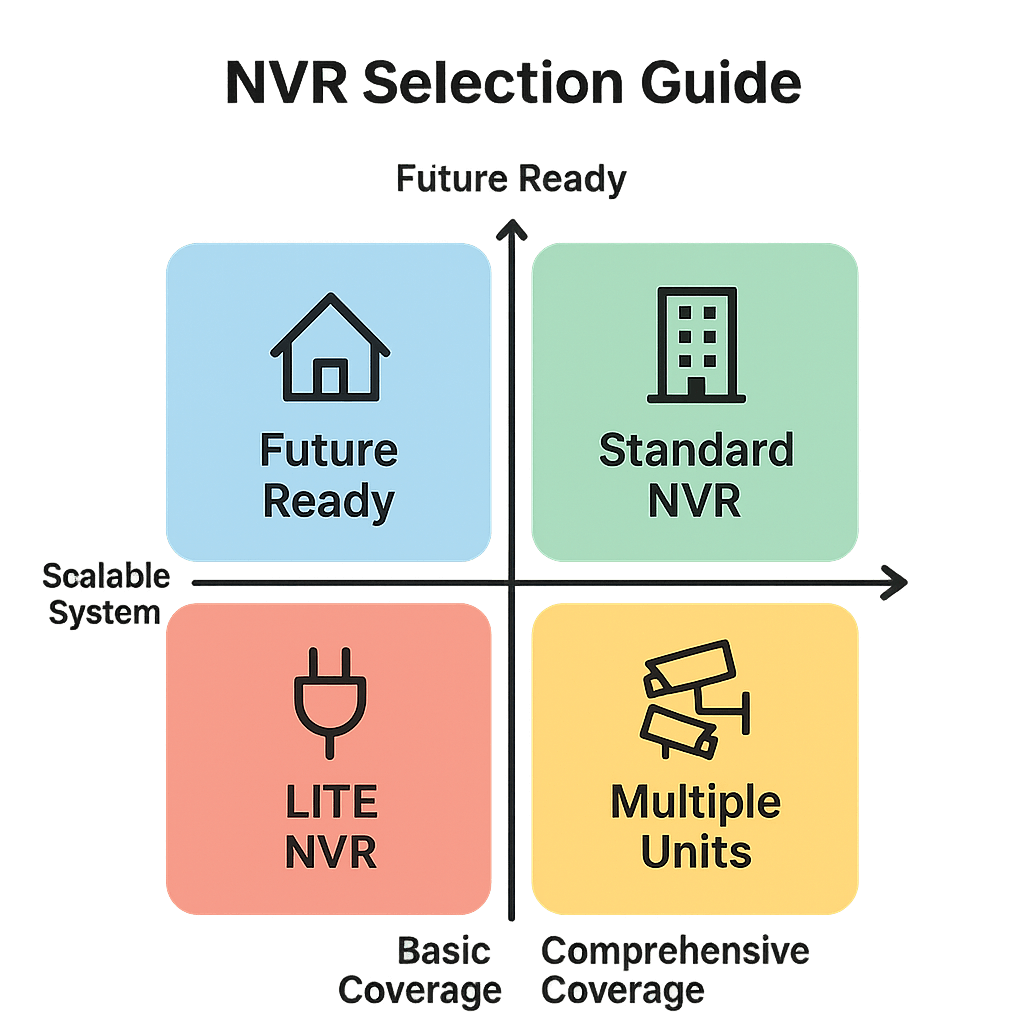
LITE Model Ideal Applications
- Small to medium residential properties
- Starter security systems with defined scope
- Installations prioritising simplicity and convenience
- Situations where integrated PoE delivers significant value
The standard recorder becomes the logical choice for larger properties, commercial applications, or installations where expansion is anticipated. Its higher capacity justifies the additional complexity when comprehensive coverage is required, and the investment in supporting infrastructure pays dividends through system longevity and adaptability.
Consider your property's layout, current security concerns, and realistic growth projections when making this decision. A 4-camera system may prove entirely adequate for focused monitoring of key areas, whilst comprehensive coverage might require the standard recorder's expanded capabilities from the outset.
Standard Model Recommended Uses
- Larger residential or commercial properties
- Multi-building or complex site surveillance
- Installations anticipating significant expansion
- Professional security applications requiring extensive coverage
Network infrastructure considerations also influence this decision, with the LITE model's integrated PoE suitable for simple installations and the standard recorder requiring more sophisticated network design. Existing infrastructure may favour one approach over the other, particularly in retrofit installations where cable accessibility varies significantly.
Making Your MyEye NVR Decision
Both recording systems excel within their intended applications, with the LITE model providing streamlined functionality for focused security needs and the standard recorder delivering comprehensive surveillance capabilities for larger installations. Neither represents a universally superior choice, as effectiveness depends entirely on matching system capabilities to specific requirements and circumstances.
The decision ultimately hinges on balancing current needs against future growth potential, weighing convenience against scalability, and considering installation complexity preferences. Properties with defined security scopes benefit from the LITE model's integrated approach, whilst those requiring extensive coverage or anticipating expansion favour the standard recorder's flexibility.
- Evaluate current camera requirements against 4-camera LITE capacity
- Consider future expansion needs and installation flexibility
- Assess PoE integration benefits versus external power solutions
- Factor in storage requirements based on retention and quality needs
Whether you choose the convenience of the MyEye Video Recorder LITE or the scalability of the standard MyEye Video Recorder, both options integrate seamlessly with the broader Nice ecosystem for comprehensive smart home security. Explore both recording solutions to determine which aligns best with your specific security objectives and installation preferences.










